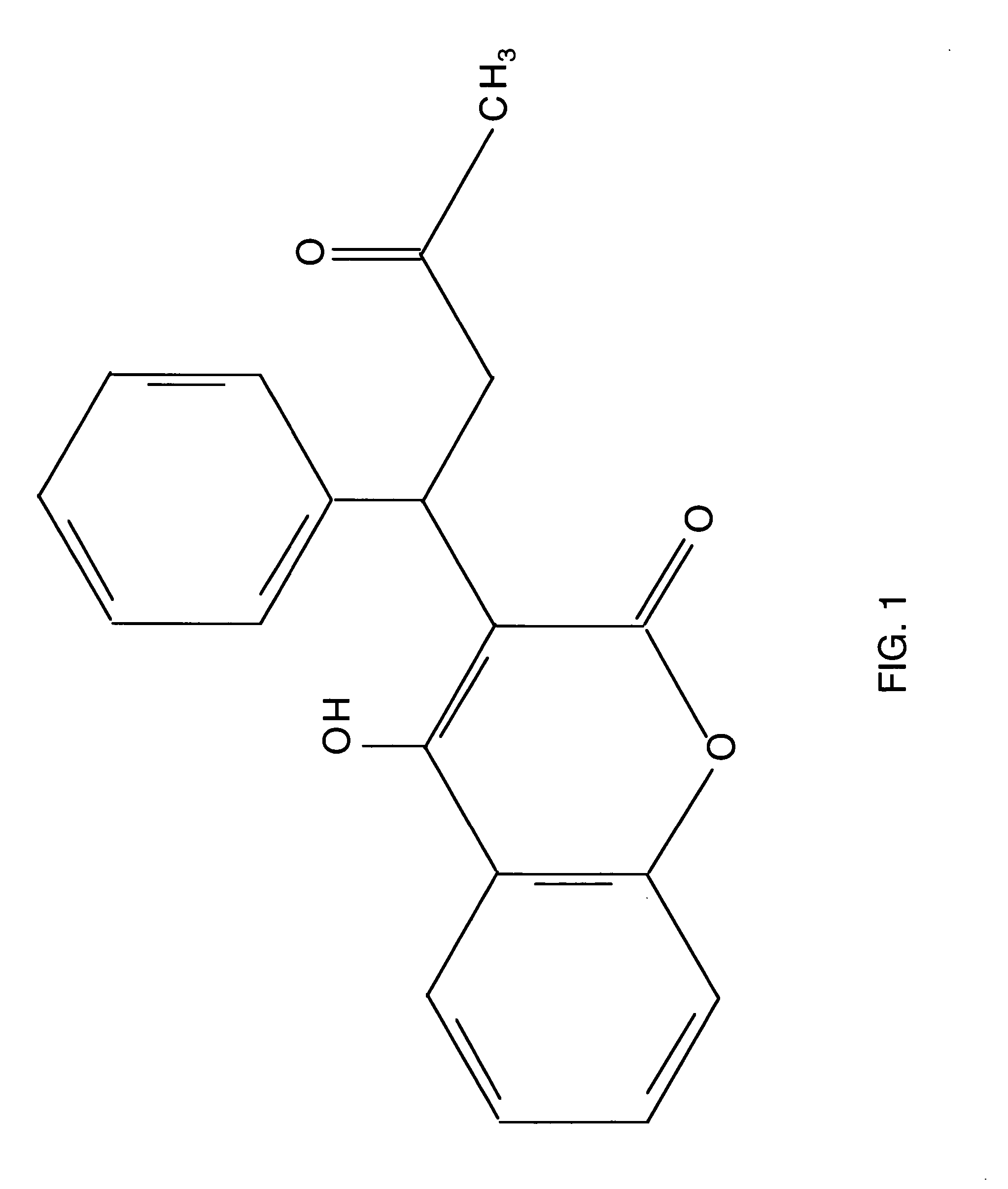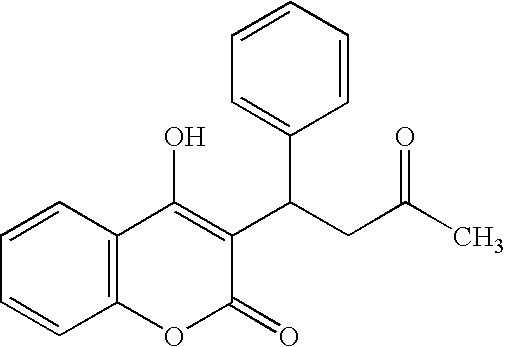Combination therapy for anticoagulation
a technology of anticoagulation and combination therapy, which is applied in the field of warfarin anticoagulation, can solve the problems of limited use of warfarin, permanent disability or death, and disastrous effects on the patient, and achieve the effects of reducing the variability of international normalized ratio levels, reducing the impact of a patient's dietary intake, and reducing the variation of the state of health
- Summary
- Abstract
- Description
- Claims
- Application Information
AI Technical Summary
Benefits of technology
Problems solved by technology
Method used
Image
Examples
example
[0030] The following is a non-limiting example of the administration of a medicament in accordance with the present invention:
[0031] In a study conducted to demonstrate the effectiveness of the present invention, 24 patients consented to participate and were randomized into three study groups: a control group receiving warfarin alone; a study group receiving combination warfarin and vitamin K in a single oral preparation; and a second experimental group receiving warfarin dosing via a standardized algorithm depicted in Tables 1 and 2.
TABLE 1INR Therapy for Established Patents Who are Indicated for INR of 2.0-3.0Last Check was done . . .INR3 days ago*4 days ago*1 week agoUnder 1.50Increase dose 2 levels.Increase dose 2 levels.Confirm patient is taking Coumadin doseRecheck in 3 days.Recheck in 3 days.daily.If yes increase the does 2 levels and recheck in3 days.If no, confirm daily dose and recheck in 3 days.1.50-1.74Increase does 1 level.Increase dose 1 level.Increase dose 1 level....
PUM
| Property | Measurement | Unit |
|---|---|---|
| composition | aaaaa | aaaaa |
| movement | aaaaa | aaaaa |
| adhesion | aaaaa | aaaaa |
Abstract
Description
Claims
Application Information
 Login to View More
Login to View More - R&D
- Intellectual Property
- Life Sciences
- Materials
- Tech Scout
- Unparalleled Data Quality
- Higher Quality Content
- 60% Fewer Hallucinations
Browse by: Latest US Patents, China's latest patents, Technical Efficacy Thesaurus, Application Domain, Technology Topic, Popular Technical Reports.
© 2025 PatSnap. All rights reserved.Legal|Privacy policy|Modern Slavery Act Transparency Statement|Sitemap|About US| Contact US: help@patsnap.com


